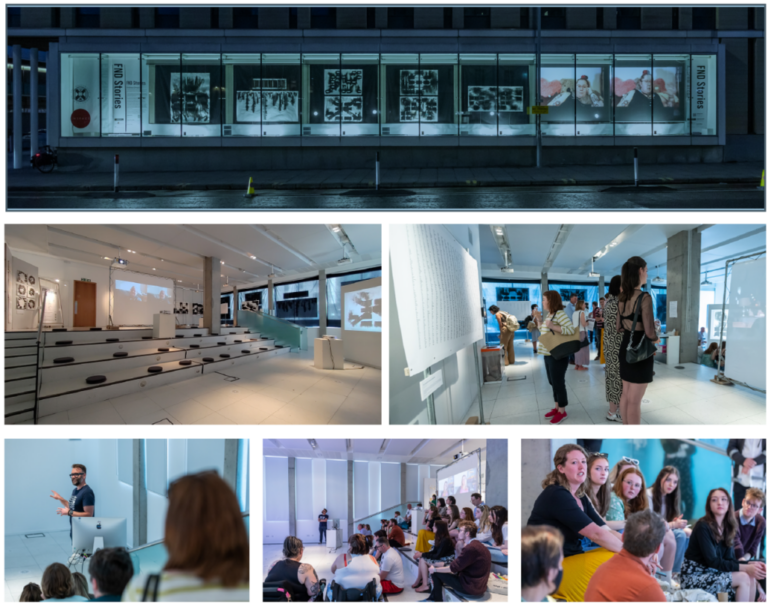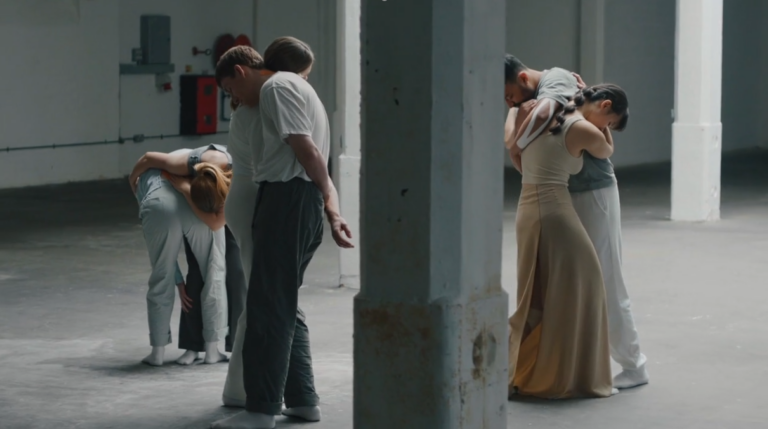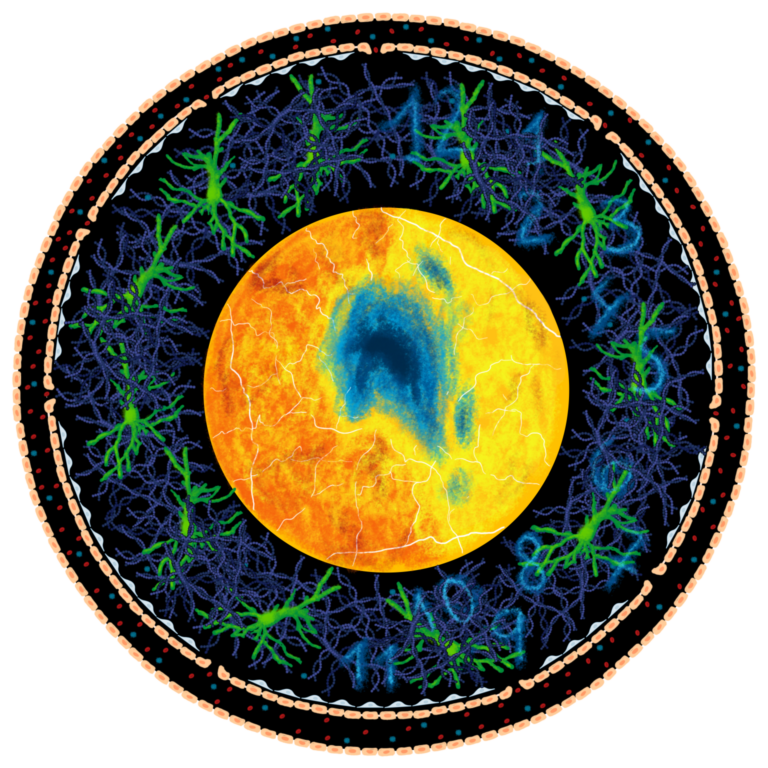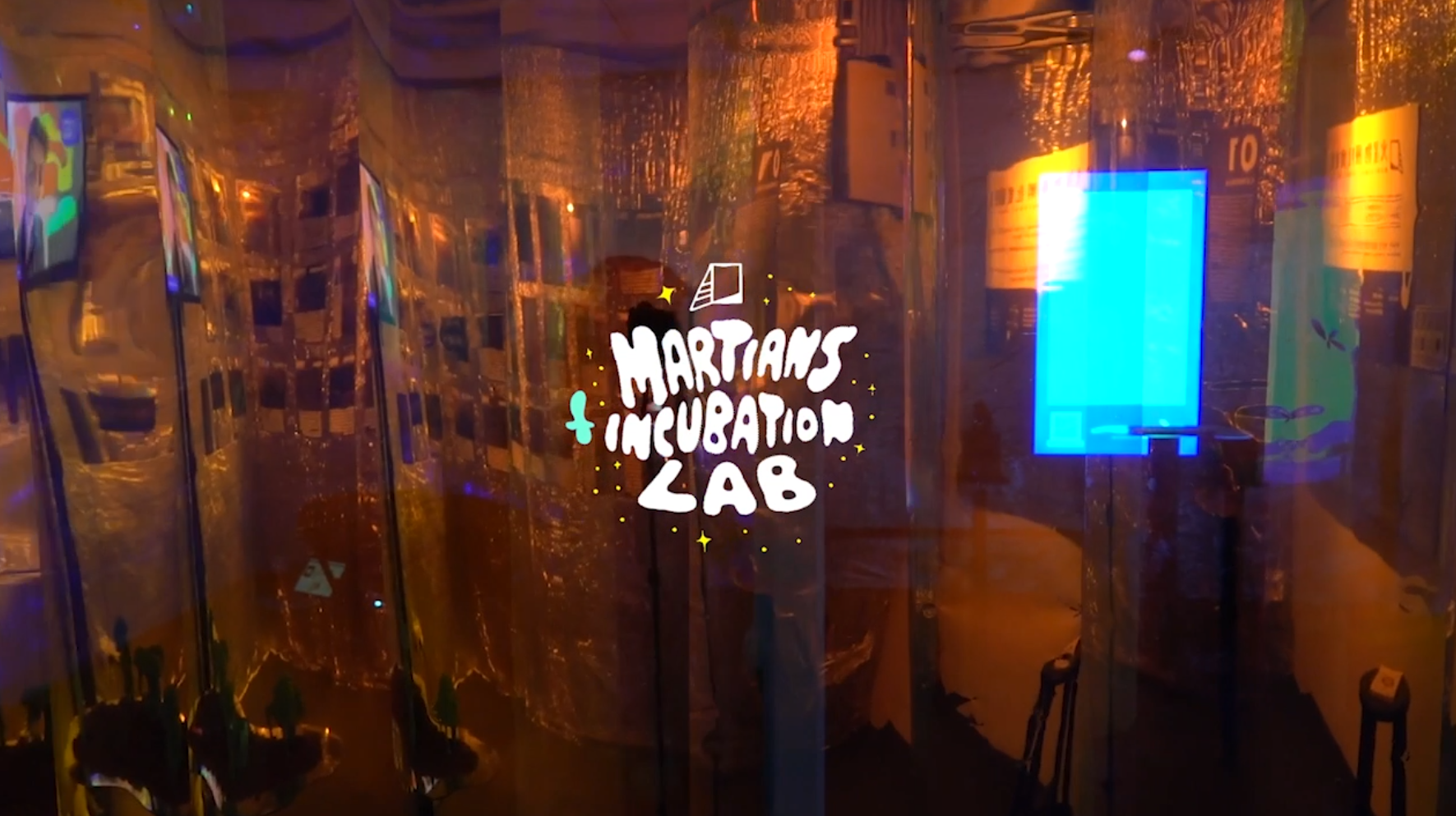Welcome to the Art of Neuroscience 2023!
We are thrilled to announce the closure of this year’s competition, which received an overwhelming response from 86 talented contestants worldwide, resulting in nearly 158 remarkable submissions. We extend our heartfelt gratitude to all participants for their outstanding contributions, making the selection process an incredibly difficult task. A special thank you goes to our esteemed jury members, Annie Cattrel, Manos Tsakiris, Matthew Pelowski, and Helene Nymann, for their critical feedback and expert opinions in identifying the winner and four honorable mentions.
In true celebration of art and neuroscience, we held a spectacular seminar at the iconic Singelkerk in Amsterdam; ‘ ARTificial: Art in the Age of AI ‘. The event showcased an exquisite exhibition featuring artworks from the past four years of the competition, immersing attendees in the transformative power of the creative mind.
Moreover, we were honored to host a captivating seminar featuring renowned speakers Eva Cetinic, Friendred Peng, and Florian Schmidt. Together, they engaged in thought-provoking discussions on the role of art in the age of AI, exploring the dynamic interplay between artistic expression and technological advancements.
We invite you to explore the selected entries below, each accompanied by a description from our winning authors. Please note that all works presented in the exhibition and competition are protected by the rights of the authors and Art of Neuroscience, and reproduction without written consent is strictly prohibited.
The Art of Neuroscience invites you to embrace the enchanting possibilities that emerge when art and the human brain unite in harmony.

Art and artist in the age of AI
- Rasa Gulbinaite, PhD
As humans, we are biased when it comes to accepting how human-like artificial intelligence (AI) can be. We delegate AI to search for patterns in the data, praise AI for making intelligent decisions, readily accept help to solve or anticipate problems, but we hesitate to credit AI human-like qualities such as understanding, emotion or consciousness. And we are convinced that emotions need to fuel the creation of art which AI is lacking. In this year’s ‘Art of Neuroscience’ seminar we asked: what does art and the creative process look like in the age of AI?
The answer depends on who you ask.
Computational artist and researcher Dr. Friendred Peng from the University Arts London was optimistic. He emphasized co-creation with AI tools. In his artistic work, he explores the new human body augmented with sensors and thus new sensations that emerge through interactions with algorithmic machines. For Friendred, AI tools and developments in robotics open up a window in how humans interact with the artwork. In his performative installations, you will not see a sign ‘Please don’t touch’. The audience actively participates and traditional barriers between artist and audience are broken down. The AI technologies, in this context, become more than tools – they become collaborators.
Dr. Eva Cetinić, a researcher at the Digital Society Initiative (University of Zurich) emphasized the abundance of the same: perfect looking images produced by txt-2-image generative AI models in just a matter of seconds. This is no surprise, because for the past years developers were focused on improving image quality and generating aesthetically pleasing images. Rather than concentrating on technological achievements of multimodal AI models, Eva turned the spotlight to the other side and reflected on what societal biases, cultural references and heritage is compressed in these multidimensional models. For her, text-2-image AI models are more than tools, they are the objects worthy of exploration in their own right. To use the analogy of archeology, they are datafields worthy of excavation.
Dr. Florian Schmidt, a professor for design and media theory at the University of Applied Science Dresden discussed how txt-2-image AI tools shape the future of design professions. Trained in classical arts as an illustrator and now working as a professor of communication design, he shared conundrums faced by the educators preparing future-proof artists and designers. Creating images by clever prompting can be long and tedious. It is not the same as erasing part of the sketch on the paper or more traditional design tools as Adobe Illustrator. Curiously, part of the prompt text is not about what the creator wants to see (“an astronaut on a horse”), but what the generated image should not contain (“no 6 finger hands”). Relatedly, the value of artwork and time invested in creating it is complicated to assess. As clients are unaware of the pitfalls and the time it takes to make the requested changes, they are unwilling to pay. When sketching the future of art and artist, Florian compared AI generated images to plastic: “It will be everywhere, everyone is going to use it and we will not even notice it”.
Inevitably, AI tools are changing both how art is generated and perceived. Just like photography did not indicate “the end of painting” and Realism was replaced by Impressionism and Modern Art, generative AI will spawn new art movements and creative roles.

FND Stories
by Andrew J. Brooks, Independent Artist
2023 Winner
FND Stories is a multi-disciplinary art project focussing on telling the stories of those diagnosed with the neurological condition Functional Neurological Disorder, or FND. The project was funded by Creative Informatics and independent from but supported by FND Hope UK. It is based on 6 in-person interviews from around the UK with people living with Functional Neurological Disorder (FND) along with contributions from over 90 diagnosed people from around the world.
FND is a common and disabling cause of neurological symptoms. The symptoms are not caused by a structural disease of the nervous system but it is a problem with the “functioning” of the nervous system. Symptoms are highly varied and can cause impairment in quality of life.
Working with online surveys and the videos and transcripts of the interviews, I used methods of text mining and data analysis (Python and Excel) to interpret the stories and data.
The artwork is multidisciplinary including video, word and physical paper-based art, to tell different facets of the stories. Large paper-based pieces, use ink and gold leaf, encoding words and information. The encoded presentation slows understanding of subject matter be it data or words, enabling a more nuanced perception by the viewer. The interview films are shown silently in pairs, one showing the subject’s reaction while listening to their favourite childhood story and the other them explaining about their life with FND. Playing them silently removes our primary communication, shifting focus from what is said to a reliance on body language – the contrast allows the viewer to emotionally engage with the teller.
The aim of the project was to make work that can portray some of the lived experiences and stories of those diagnosed with FND. I don’t want to portray a list of symptoms but reveal different facets of people’s stories.
Viewer comment on Twitter:
“Don’t really know how to put into words how it felt to stumble into this while crossing campus today. Like 15 years of shame and grief melted off my shoulders. Thank you @bajbart @FNDHopeUK and all who participated”
Tweet from @JustinBiggi, 12:17am June 10th, 2022.
For the complete description the project, please visit the project website.

The Forgotten Giants of Neuroscience
by Bart Lutters, Utrecht University Medical Center
2023 Honorable Mention
Ever more driven towards future progress, we sometimes forget that our current understanding of the brain and nervous system builds on countless contributions of people in the past: not just of physicians and scientists who conducted groundbreaking experiments, but also of the many brave individuals who underwent neuroscientific experiments in the face of imminent danger and paralyzing uncertainty. In this collage series, I draw upon historic archival material and my knowledge of the history of he brain to represent the lived experiences of the forgotten individuals who, by participating in experimental neuroscientific procedures in the past, made an invaluable contribution to neuroscience today.

Plassein
by Alexandra Davenport, Independent Artist & Visiting Lecturer, University of Portsmouth (UK)
2023 Honorable Mention
Taking its title from the Ancient Greek verb meaning “to mold or shape”, Plassein is a choreographic interpretation of neuroplasticity using performance and moving image to explore reorganization, adaptation, and growth.
Echoing ideas that plasticity enables the brain to be simultaneously formative and formable, the body is proposed as a site of both knowledge production and knowledge exchange. The performers are continually forming new connections and pathways, working together to hold, fold, weave, curve & hinge. Moving with the body, the camera too becomes a performer – tracking movement but also creating it. The exchange between performers & camera creates a new architectural reality which is in a constant state of transformation.
In the age of hyper-productivity, principles of neuroplasticity have been capitalised on with suggestions of how we might ‘rewire’ our brains to become more efficient. Plassein invites an alternative reading that moves away from the unrelenting pressure to produce & consume, with an emphasis instead on learning, growing & exchanging.

The Alzheimer’s Eyee
by Lucia Rohfleisch, Independent Artist
2023 Honorable Mention
Alzheimer’s Disease (AD) is the most common neurodegenerative disorder affecting approximately 37 million (2019) people worldwide. The disease is characterized by increasing memory impairment accompanied by a variety of additional cognitive dysfunctions, e.g., in language, visuospatial function, and executive function.
In “The Alzheimer’s Eye”, various diagnostic markers for AD are shown in the form of an eye: loss of retinal blood vessels (inspired by the Duke Eye Center), neurofibrillary tangles*, amyloid beta*, reduction in neuroplasticity (seen in the loss of dendrites and spines of neurons in the hippocampus), dysregulated blood-brain barrier* transport, blood-brain barrier breakdown, and the dementia clock test.
This digital image was created by Lucia Rohfleisch, a Research Master’s student in Cognitive and Clinical Neuroscience: Drug Development and Neurohealth (Maastricht University). She is currently working on her master’s thesis project at Imperial College London. The project examines the administration of a novel compound to treat Alzheimer’s via Focused Ultrasound and Microbubbles.
*The illustrations of neurofibrillary tangles, amyloid beta, and pericytes were created with BioRender.

Martians Incubation Lab
by Hung Lu Chan, Independent artist, National Taiwan Museum of Fine Arts
2023 Honorable Mention
Without scientific findings, our imagination of aliens has always been the projection of our own biases and emotions into the unknown. Thus, in addition to searching for extraterrestrial life in outer space, exploring the “intraterrestrial life” hidden in the inner universe is equally important, as intraterrestrial life symbolizes the projected inner consciousness regarding the unknown, and in turn, it shapes our views on extraterrestrial life.
This project uses Mars, the most stigmatized planet in space as the base for reshaping our imagination of aliens. Even though the appearance of Mars has become disenchanted with the advances of space technology, people’s imagination of Mars has not been weakened and is still biased; hence, this project aims to bring audiences back to the first place where Mars was alienated, the geographical environment, and through which to trigger their imaginative power for exploring inward and developing spiritual relationships with Mars.
Martians Incubation Lab is a mind-body medium that merges real and fictional situations, audiences are invited to become incubation personnel and will conduct an incubation experiment of Martian consciousness, an interactive experience that combines brainwave sensing and mental image. Via scientific-based guided meditation, audiences imagine themselves as a Martian lifeform to sense the environmental states, atmosphere, and emotions of Mars. During the imagination, the sensor will translate audiences’ brainwaves into real-time soundscapes and motion graphics. This conversion process resembles extracting the inner consciousness that audiences project on Martian lives and will then, give birth to a Martian consciousness that establishes the spiritual relationship between the self and Mars. Finally, the collective of Martian consciousnesses demonstrates the diverse inner states of people connecting Mars from within and hopefully, provides inspiration to spiritually approach otherwise societies and worlds.
